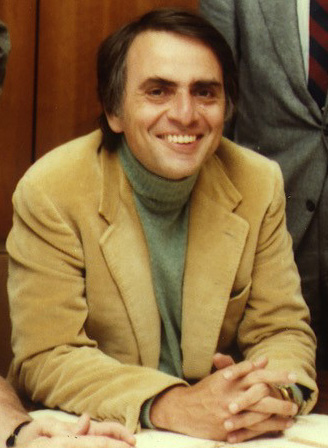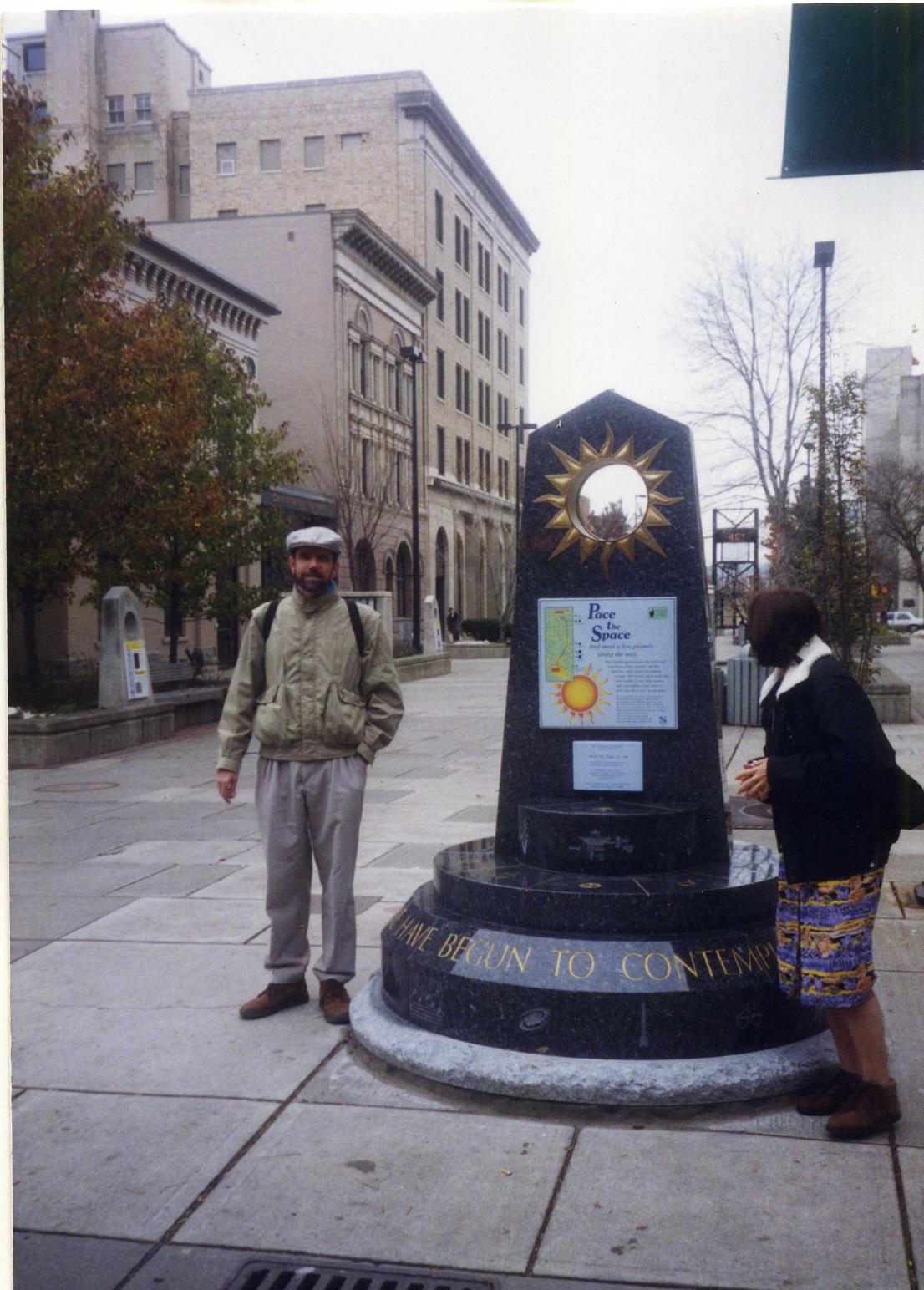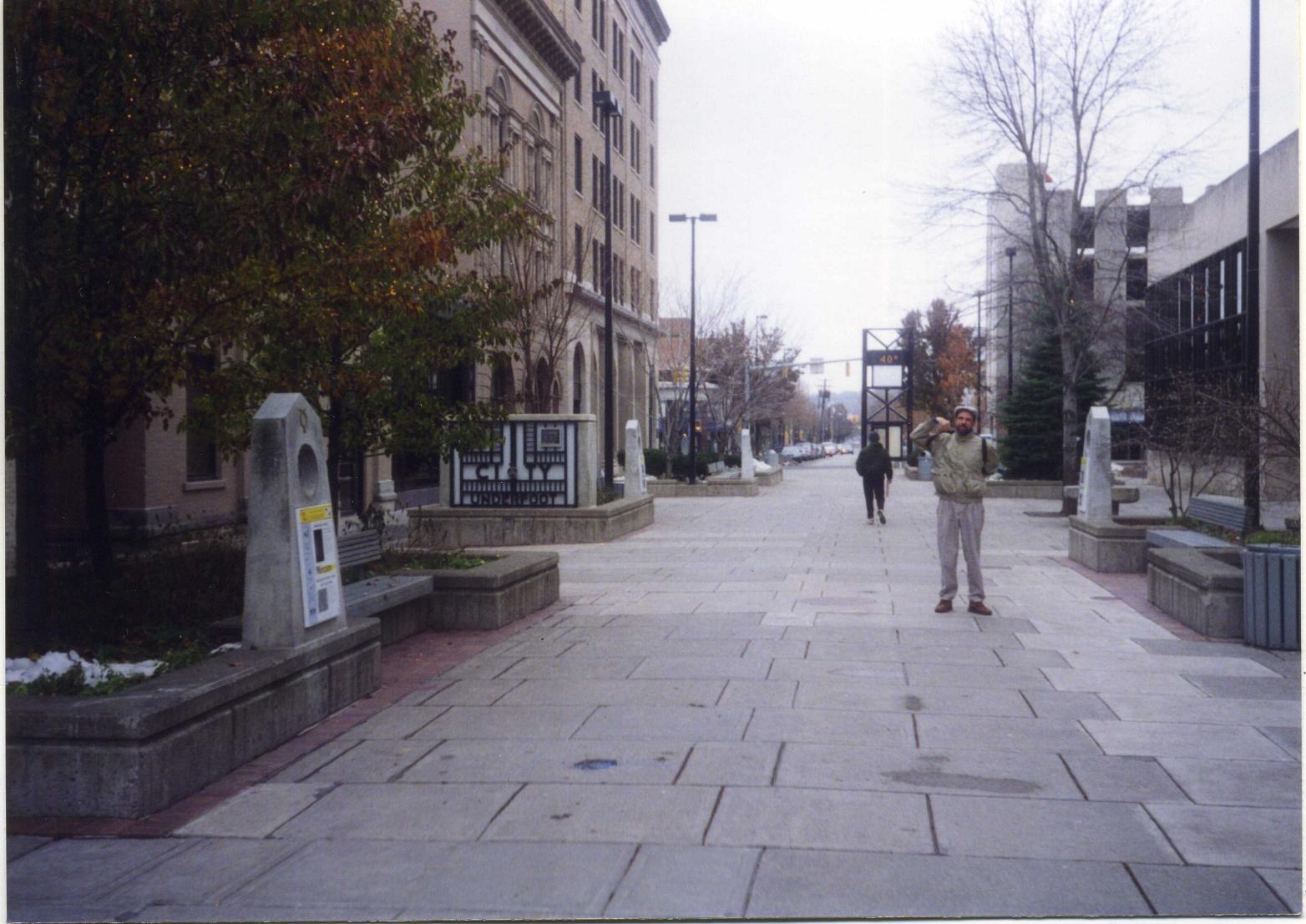
Carl Sagan, at the time of the production of the TV series “Cosmos”.
Domingos Soares
October 30, 2015
“It is better to light a candle than curse the darkness.”
— Popular proverb
Carl Sagan (1934-1996), American astronomer and passionate communicator of the
scientific achievements of humanity, was a champion of scepticism. If one
consults a dictionary one finds the following meanings of scepticism: doubt as to the
truth of something, disbelief, incredulity.
But Carl Sagan added a fundamental spice to his obstinate scepticism, namely, the scientific method. For him, “science is like a candle in the dark”. Citizenship, for him, included a complete and personal understanding of how the world surrounding us is and how it works. Carl Sagan was probably the brightest amongst scientists that devoted themselves to the dissemination of science.
Carl Sagan became famous because of the television series exhibited in the whole world in the beginning of the 1980s. On September 28, 2010 were completed 30 years of the exhibition, in the United States, of the first episode of this series. It is called “Cosmos: a Personal Voyage” and is constituted by 13 episodes with the approximate duration of 1 hour each.

Carl Sagan, at the time of the production of the TV series “Cosmos”.
In Cosmos, Carl Sagan tries to show the human adventure in search of his temporal and spatial location in the universe. Such a search became concrete with the invention of this fabulous endeavor called “science”. The history of the development of science is shown through experiments and visits to the places where it begun to develop.
The television series was presented also in the format of a book, entitled “Cosmos”, which stays current and exciting till the present day.

Front cover of the book “Cosmos”, which aims at synthesizing on paper the thirteen episodes of the homonym television series.
Carl Sagan is the author of many other books, the majority of them dedicated to the dissemination of science. He is the author of a science-fiction book, called “Contact”, which has served of inspiration for the movie of the same name and of great success in 1997. The last of his books, published in 1995, a year before his death, was “The Demon-Haunted World”, which had the subtitle “Science as a Candle in the Dark”.
This book represents — it is fair to say — a synthesis of Carl Sagan's battle in favor of the enlightened scepticism and of the permanent suspicion with respect to the world around us. “The demons” represent the misleadings and delusions that are presented to people, and that have the purpose of maintenance of power and personal advantages of those that present them. The scepticism is illuminated by the “candle” that is science, by means of the tools of the scientific methodology.
At the end of chapter 4 of “The Demon-Haunted World” we read: “Those who have something to sell, those who wish to influence public opinion, those in power, a sceptic might suggest, have a vested interest in discouraging scepticism”. And a little before, in this same chapter: “All science asks is to employ the same levels of scepticism we use in buying a used car or in judging the quality of analgesics or beer from their television commercials”.
And how many “wonderful” facts and statements are every time presented to us: the visit of extraterrestrials, life after death, were the gods astronauts?, the man did not walk on the moon, the existence of wizards and witches with magic powers, bracelets, glasses, etc. endowed with healing powers, and what more? Always sceptics, enlightened by the scientific method, we must question all of this. That is Carl Sagan and his enlightened scepticism's message.
In November 1997, almost a year after his death, that occurred on December 20, 1996, Carl Sagan received one more deserved homage. This time from the community of Ithaca, a small university city in upstate New York, and where sits Cornell University, a world prestigious center of teaching and research, where he taught and researched.
On November 8, 1997 the “Sagan Planet Walk” was inaugurated. This is a course of 1.2 km, beginning at the Commons, Ithaca's central mall, and ending in the city's Sciencenter. The pathway is punctuated by “stations”, which represent the Sun and the solar planets. The Sun's station was placed in the square and Pluto — at that time still classified as a planet — at the Sciencenter. The distances between the Sun and the planets were put in scale in such a way that the distance from the Sun to Pluto — approximately 6 billions kilometers — corresponds to 1.2 km, resulting therefore in a scale of 1 to 5 billions.
I was in Ithaca in that year, as a Visiting Scholar at the Astronomy Department, of Cornell University, and had the great joy of attending, with my wife, the inauguration of Sagan Planet Walk. See more details about it in www.sciencenter.org/sagan-walk.html.

|

On the left, the Sun station, I on the left side and my wife. It is possible to see slightly on the back and on my right the Mercury station. On the right, four stations: Mercury, Venus, Earth and Mars, in the central mall, the Commons of Ithaca, NY (November/1997). |
For more information about the life and work of Carl Sagan, the interested person may visit The Carl Sagan Portal at www.carlsagan.com/.
Read also at Virgo Galaxy Walk the description of another astronomical walk, strongly inspired in Carl Sagan's.